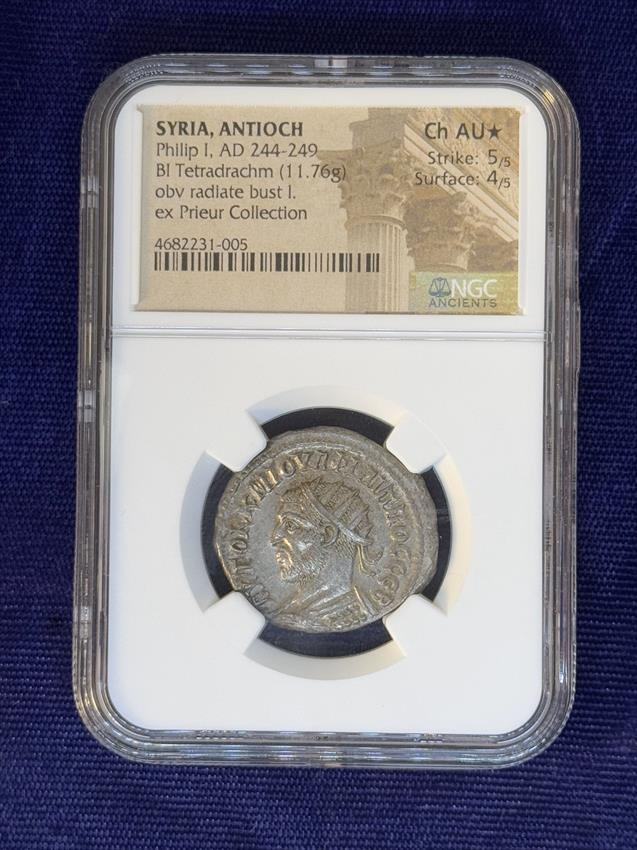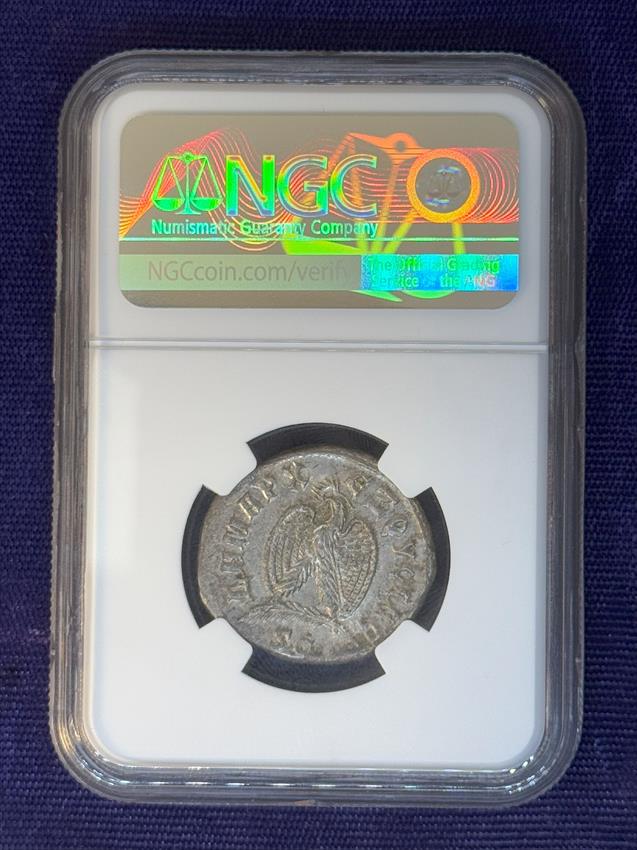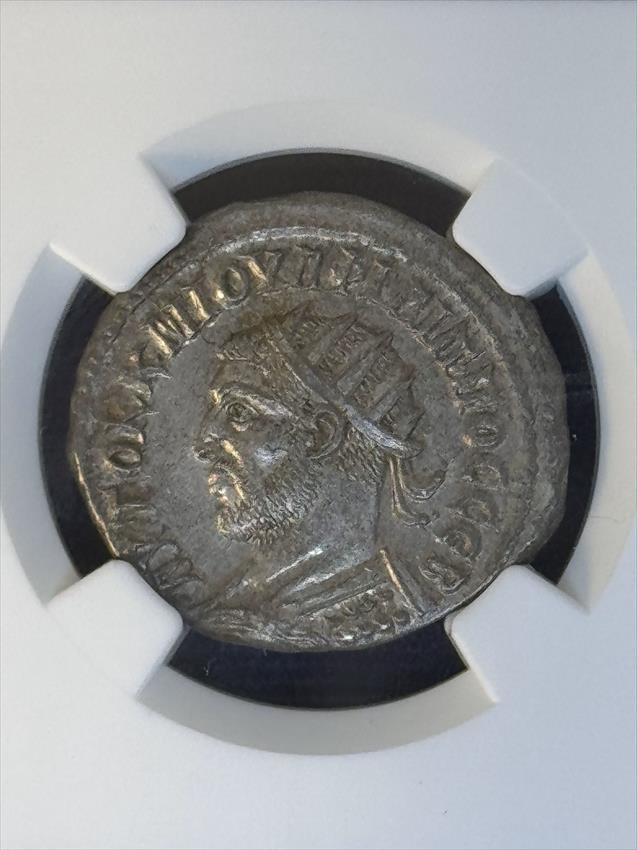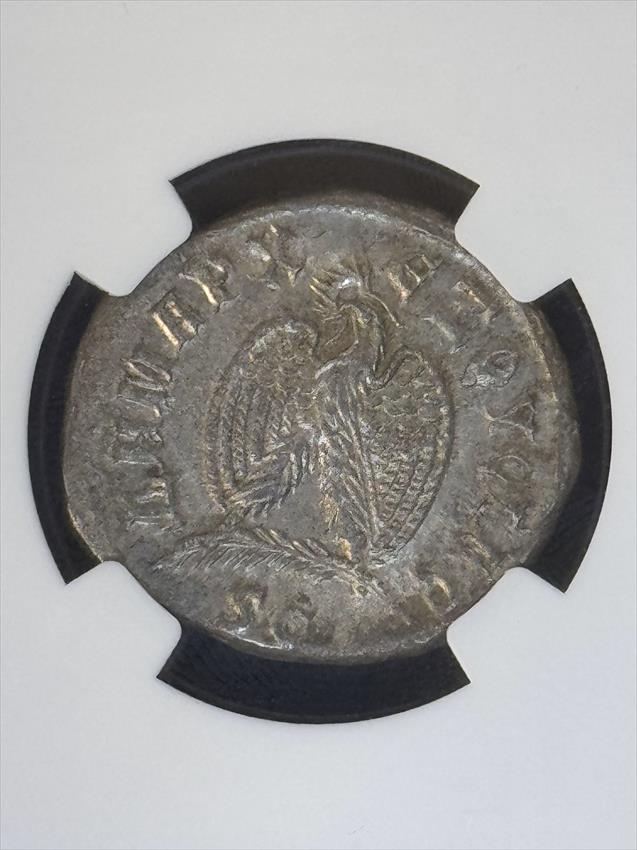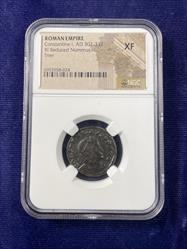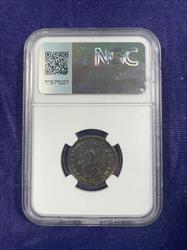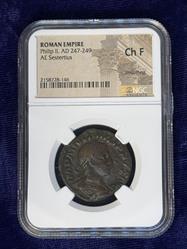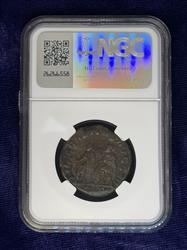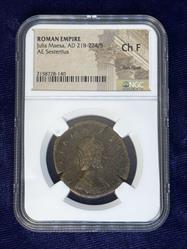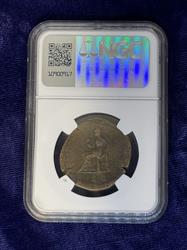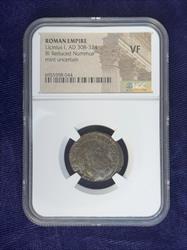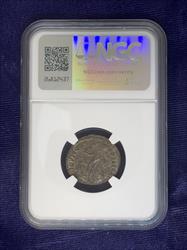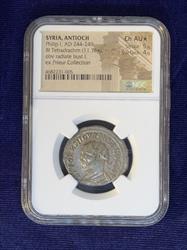
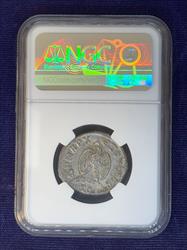
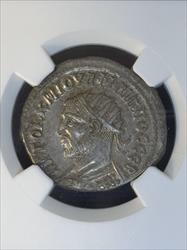
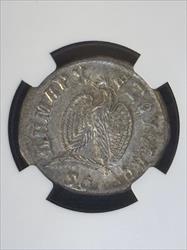
Philip I BI Tetradrachm AD 244-249 Ch AU strike 5/5 surface 4/5
$750.00
$774.38
Check/Wire
Credit Card
| Quantity | Check/Wire | Credit Card |
|---|---|---|
| 1+ | 750.00 | 774.38 |
- SKU: BFB005758
- Categories: ANCIENTS ROMAN ROMAN EMPIRE
The tetradrachm was a large silver coin, named because it was equivalent to four drachmae. Originally from ancient Greece, this type of coin was adopted by other nations and states including the Roman Empire and Egypt. The large surface area allowed rulers and governments to convey political messages and advertise themselves.
Philip I, also known as Philip the Arabian, was born around 204 AD in Roman Arabia. In 243 he was appointed Praetorian Prefect under Emperor Gordian III during the campaign against Persia. After the death of Gordian in 244, Philip was proclaimed emperor by the army. He made peace with Persia and returned to Rome, where the Senate confirmed him as emperor. In 247, he celebrated Rome’s 1000th anniversary with grand games and monuments. He also elevated his son, Philip II, first to caesar and later to co-emperor. Philip’s reign was marked by both prosperity and unrest, with frequent revolts challenging his rule. In 249, he faced the rebellion of Decius, a general sent to quell an uprising in the Danube. Philip was defeated and killed in battle, and Decius was proclaimed the next emperor.
Obverse: ΑΥΤΟΚ Κ Μ ΙΟΥΛ ΦΙΛΙΠΠΟϹ ϹΕΒ (Emperor Caesar Marcus Julius Philippus Augustus), radiate and cuirassed bust of Philip I, left
Reverse: ΔΗΜΑΡΧ ΕΞΟΥϹΙΑϹ, S C (holder of the tribunitian power, by decree of the Senate), eagle standing left, on palm, spreading wings, holding wreath in beak
Reference: Prieur 313; McAlee 893
Philip I, also known as Philip the Arabian, was born around 204 AD in Roman Arabia. In 243 he was appointed Praetorian Prefect under Emperor Gordian III during the campaign against Persia. After the death of Gordian in 244, Philip was proclaimed emperor by the army. He made peace with Persia and returned to Rome, where the Senate confirmed him as emperor. In 247, he celebrated Rome’s 1000th anniversary with grand games and monuments. He also elevated his son, Philip II, first to caesar and later to co-emperor. Philip’s reign was marked by both prosperity and unrest, with frequent revolts challenging his rule. In 249, he faced the rebellion of Decius, a general sent to quell an uprising in the Danube. Philip was defeated and killed in battle, and Decius was proclaimed the next emperor.
Obverse: ΑΥΤΟΚ Κ Μ ΙΟΥΛ ΦΙΛΙΠΠΟϹ ϹΕΒ (Emperor Caesar Marcus Julius Philippus Augustus), radiate and cuirassed bust of Philip I, left
Reverse: ΔΗΜΑΡΧ ΕΞΟΥϹΙΑϹ, S C (holder of the tribunitian power, by decree of the Senate), eagle standing left, on palm, spreading wings, holding wreath in beak
Reference: Prieur 313; McAlee 893

